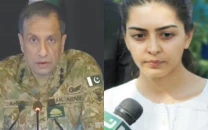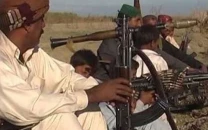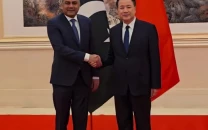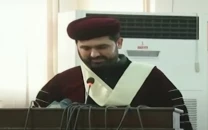Bus rapid transit: Still a long way to go
Authorities in Karachi seem to be in no hurry to push ahead with the transportation system.

“They [Punjab government] don’t even have a feasibility report. How can you implement such a big project without working out all the details,” claimed Anwar Baig, a director at Karachi Mass Transit Cell (KMTC), referring to Lahore’s Metro Bus Service Authority. He was speaking at a seminar on the “History of Mai Kolachi’s Karachi - How the Megacity Developed” at Frere Hall on Saturday night.
Around the world, cities are increasingly turning to BRTS as a way to counter traffic congestion without spending too much on altering infrastructures. The transit system involves dedicated buses lanes, which crisscross roads and bridges.
Cost overruns have already become endemic to Lahore’s BRTS, which has entered the trial run. “Their one-lane bus rapid transit spanning over 27 kilometres is going to cost them over Rs30 billion,” Baig said. “In Karachi, six lanes with a combined length of 75 kilometres will be completed for Rs25 billion.”
Despite all the criticism, Punjab chief minister Shahbaz Sharif has put all his weight behind the transit system in Lahore, slashing budgets from different departments to divert funds for its completion. The Karachi Metropolitan Corporation (KMC), however, has yet to begin groundwork.

“Karachi’s BRTS will start under a public-private partnership model, which will be financially sustainable,” Baig said as he couldn’t help resist drawing comparisons between the KMC’s BRTS proposal and what Lahore has actually done. In Lahore, 18-metre-long articulated buses, each with a capacity to seat 160 passengers, will be used. “That is an expensive proposition. We will have smaller 12-metre buses and three buses will run at a time,” the KMTC director said. “This will also make it easier for us to add or remove the buses depending on the number of passengers.”
With actual service expected to start by 2014, the first BRTS in Karachi will run on a 22.4-kilometre-track from Dawood Chowrangi in Landhi to Numaish Chowrangi in Saddar. The track has been named the Yellow Line and around 13,000 passengers are expected to use the rapid transit system every hour. The KMC intends to recover the Rs2 billion cost of the Yellow Line by allowing advertisement rights to the bus operators at 21 stations along the route besides the travelling fare.
Japan International Cooperation Agency (JICA), which is assisting KMC in the bus rapid system, has also prepared a detailed Karachi Transportation Improvement Project report, Baig said. “We will get the document in a few days. It deals with streamlining the entire public transport system,” he added, explaining that the KMC will also use the study to identify new revenue sources. “One of the proposals is to make ticketing mandatory in public buses and levy a nominal 10 paisa tax. This could help KMC in generating much-needed cash, which can be used for other infrastructure projects.”
Political interference and financial constraints have hindered development of the city as envisaged under its development plan, believed urban planner Iqbal Mirza. “We have so many schools but thousands of children cannot afford to go there,” he said.
Published in The Express Tribune, January 1st, 2013.


















COMMENTS
Comments are moderated and generally will be posted if they are on-topic and not abusive.
For more information, please see our Comments FAQ